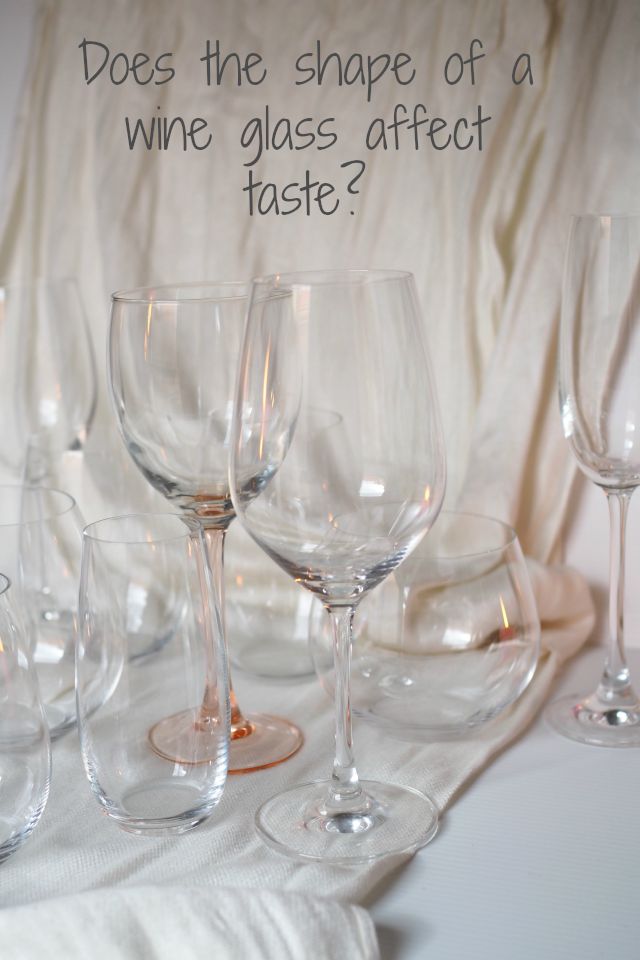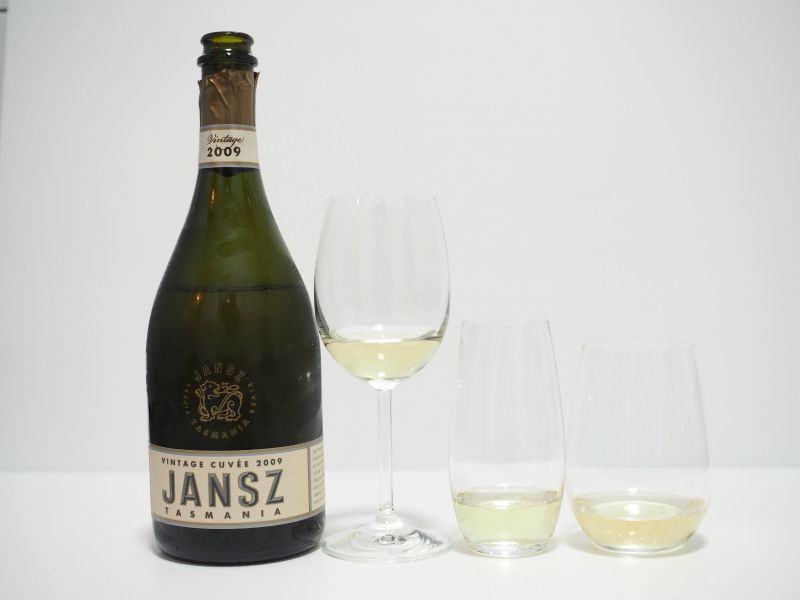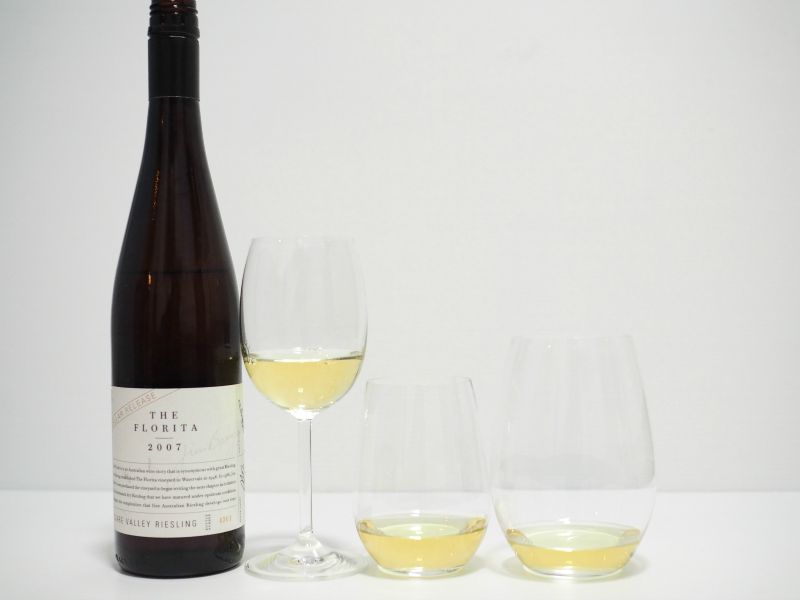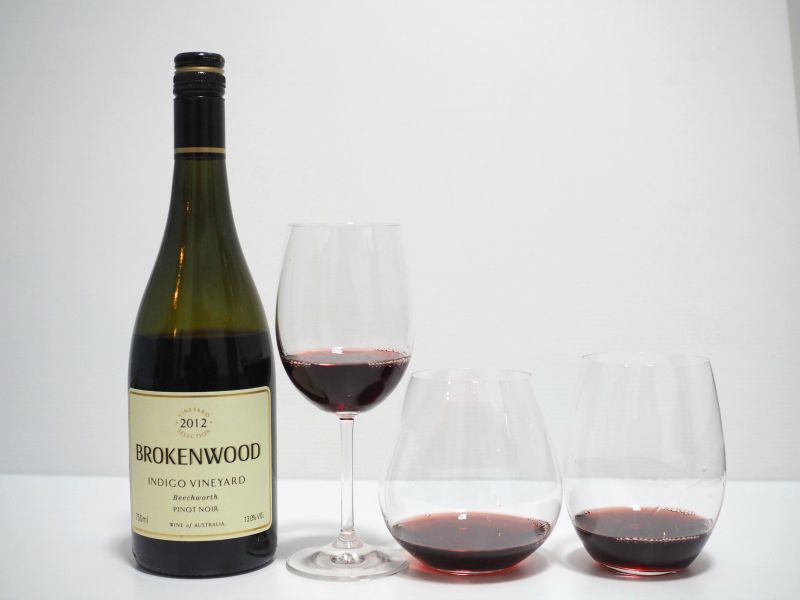I embrace my inner winegeek. Well, the truth is my ‘inner’ geek is really more of an outtie. I swirl wine glasses compulsively, I hold them by the base, I always sniff wine before I drink it – even at 5pm on a Friday. I have been known to swirl and slurp water when it was served in a wine glass. Awkward.
However twelve months ago if you asked me “Does the shape of a wine glass affect taste?” I would have raised an eyebrow. I knew I liked to drink wine out of a nice glass – good quality thin glass or crystal, aesthetically pleasing. I guessed that shape might have some effect on the way the aromas were trapped in the glass or released, so the intensity of the aromas would be affected a bit. But could a glass shape actually affect the flavour…
The night I changed glass shape camps was at a dinner party with bunch of winegeeks. Towards the end of the evening one of the guys opened a Grand Cru St Emilion (translation: very expensive, premium, merlot/cabernet blend from a particular region of Bordeaux in France). I hadn’t tasted many of these and was pretty disappointed to find it tasting quite flat, savoury and almost meaty. Nothing interesting at all, in fact I suspected it might be slightly faulty. Still, I am a geek, not a nerd, I didn’t want to be rude and am acutely aware of the gaps in my knowledge; so I didn’t say anything. That is, until a couple of the others started to rave about it: the violet notes, red berries, blackcurrant, spice, aniseed. Did I get a different wine? I couldn’t stay quiet any longer. I told them what I was getting – meaty, savoury characters and very little fruit. I swapped my fairly square glass with the large bowl-shaped next to me and it was a different wine. Except it wasn’t.
Admittedly this is an extreme example but it certainly opened my mind to just how much the shape of a wine glass can affect taste. When Your Home Depot asked if I would be interested in reviewing some Riedel (the Grand Cru of glassware) glasses, the scientist in me just had to play with this idea of shape affecting taste. I was sent some varietal specific stemless glasses for my ‘experiment’.
So, here is my nod-to-science (if not terribly scientific) case study. I opened each wine immediately before assessing and did not decant because I wanted the glass shape to be the primary determinant of aroma/flavour profile. I deliberately picked quality wines that I knew and liked so that I could focus on the differences the glasses made. After taking the picture, my wine-interested-but-not-geeky partner and I say down and wrote an honest tasting note for each glass. We were not blindfolded and so obviously we knew which were the varietal specific glasses, but we tried not to let that change what we were actually smelling and tasting. In each case I used a general wine glass, the varietal specific glass that matched the wine and a varietal specific glass that did not match. This is what we found:
Does the shape of a wine glass affect taste?
Sparkling – 2009 Vintage Jansz, Tasmania
Standard glass: Aromas of brioche, almond and citrus. On the palate the wine has lots of zesty citrus, a hint of granny smith apple and some lovely toasty characters
Champagne flute: Aromas are pretty subtle and alluding to citrus. On the palate the wine is very linear and quite closed with flavours of citrus, gooseberries, a hint of minerality and crisp acidity
Riesling glass: The mousse (bubbles) are pretty sluggish in the wider bowl. Aromas are more pronounced than with the other two glasses with lifted floral, citrus and a hint of musk. On the palate the wine is softer, more blousy, less precise, with hints of citrus and toast.
Conclusion: I have to admit to not being a fan of flutes. My first preference for drinking bubbles is a Champagne glass which allows the wine to breathe. Failing that I will usually choose a while wine glass over a flute because the aromatics are just so much more obvious. The thing that interested me is that the riesling glass enhanced the floral aromatics, which is what characterises the wine it is designed for; while the flute delivered minerality and a clean acid line – characters associated with Champagne (as in actual Champagne, from Champagne in France).
Riesling – 2007 Jim Barry ‘The Florita’ Riesling, Clare Valley
Standard glass: Subtle aromas of lanolin, lime oil, toast, hay, talc and minerality. The palate has flavours of yuzu curd, toast and honey – medium intensity
Riesling glass: Aromatics jumped out of the glass – orange blossom, honey, and some slightly savoury characters. Flavour was pronounced and complex with layers of honey, toast and grapefruit.
Syrah (Shiraz) glass: Simple aromas of lemon and lime. Citrus-pith flavours on the palate with a more distinct acid line.
Conclusion: The standard glass and the Riesling glass really showcased the wine in different ways. The larger glass lost many of the delicate aromatics and made the wine taste thinner.
Chardonnay – 2010 Yering Station Chardonnay, Yarra Valley
Standard glass: Aromas of peaches and cream, oak, nectarine and yellow flowers. Flavours of stone fruit, vanilla, grapefruit with crisp acidity.
Chardonnay glass: Aromatics more in the floral spectrum plus grapefruit citrus, cashew and tangy greek yoghurt characters. Flavours were broad on the palate with buttery, nutty characters, grapefruit, white peach and sweet vanilla
Syrah (Shiraz) glass: Aromatics were the most intense in this glass with white and yellow flowers, oak, vanilla, custard and pastry notes and tropical fruit. On the palate it was more linear, with less buttery texture compared to the chardonnay glass. Flavours were of grapefruit and ripe stonefruit with palate-cleansing acidity.
Conclusion: This one was a little divisive. My partner preferred the first glass and I quite like the intense aromatics and crisper finish of the shiraz glass. The take-home message though was that the glass shape certainly altered the character of this wine.
Pinot Noir – 2012 Brokenwood ‘Indigo’ Pinot Noir
Standard glass: Aromas of dark berries, cherry, strawberry, forest floor, spice, anise and a hint of cocoa powder. On the palate there was lots of black cherry finishing with redcurrant notes, savoury herbs and subtle oak.
Burgundy (pinot noir) glass: Aromas of forest floor, spice, dark berries and some deep earthy characters along the lines of roasted beetroot. On the palate there was more depth of dark berry fruits, earthy characters and a long savoury finish.
Syrah (Shiraz) glass: Aromatics were lifted with floral notes and dark berries. The palate was shorter with less flavour concentration and the fruit was lighter- tending towards redcurrant notes.
Conclusion: The burgundy glass delivered richer, rounder aromatics and a more mouth filling, complex palate. The wider bowl allowed the wine to breathe and develop and definitely delivered it at its best.
Shiraz – 2010 Yalumba Paradox Shiraz, Barossa Valley
Standard glass: Aromas were subtle – cherry and blackberry notes with a hint of menthol. On the palate there was prominent grippy tannins, menthol and blackcurrant jube characters with a hint of black pepper
Syrah (Shiraz) glass: Lifted aromatics of sweet, ripe, cherries and blackberries, vanilla and charry oak. One the palate the fruit was plush with red and black berries and some minerally graphite notes. Tannins were more rounded than the first glass.
Riesling glass: Aromatics were quite closed but showed black fruits, vanilla and cinnamon with some strawberry hints. On the palate again it was quite closed with pepper and wild strawberry, grippy tannins and a shorter finish.
Conclusion: The Shiraz glass opened up this wine significantly, softening the tannins, intensifying the flavours and aromas and adding depth to the wine.
Cabernet Sauvignon – 2011 Forest Hill Cabernet Sauvignon, Great Southern WA
Standard glass: Rich aromatics of blackcurrant, licorice and leather. On the palate there was juicy blackberries and blackcurrants with a grippy tannin structure.
Cabernet Sauvignon glass: More complex aromatics of blackcurrant, liquorice, and some savoury dried herb notes. On the palate the fruits were a little brighter with dark berries and some raspberry and red currant notes too. The tannin levels were still high but riper in character.
Chardonnay glass: Really closed on the nose with some dark berries and a prominent graphite note. On the palate the wine tasted thin with less fruit, more herbal, savoury characters and the alcohol was noticeable.
Conclusion: Glass shape had quite an impact on the wine, similar to my St Emilion experience. The flat open shape of the chardonnay glass lost a lot of the elegance and fruit present in the wine. The large bowl of the Cabernet glass helped open up the wine and show it at its best.
So, the shape of a wine glass does affect taste…
But what do we do with this information? Most of us can’t afford or don’t have room for a whole range of wine glasses. Riedel suggests that you invest in one glass about as much as you usually spend on a bottle of wine. If you have stemware-seeking glass-breaking ninjas (aka kids) in your house I strongly suggest some stemless numbers. I tend to stick to a good quality, fine but durable and affordable range of glasses for weekday wine (and if ninjas are about) but am quite pedantic about bringing out the varietal-specific glasses when I open a good bottle. After this little experiment my purchasing priorities would be some pinot noir and either shiraz or cabernet glasses. Alternatively, you can purchase the set that I reviewed (and a range of other Riedel products) from Your Home Depot.
The other take home for me is that if a wine doesn’t grab you, it might be worth trying it in a different glass. And if someone calls you a winegeek, just swirl your glass and slurp at them 😉
*If you aren’t into winegeeks, you might like this – autocorrect turned ‘winegeeks’ into ‘whinges’ every single time I typed it in this article 🙂
Disclosure: I was sent Riedel glasses from Your Home Depot for the purposes of writing this post. All ideas and opinions remain my own.








Get in touch with the lads and lasses at Riedel Australia, they do a great run through of wine glass shapes!
I never pour sparkling wines into flutes anymore!!!
Argh! I left a comment and lost it! I thought all I had to worry about was matching my food to my wine and now I have to think about the glasses too! It’s fascinating though, isn’t it and a great excuse to make some additions to the glassware cabinet (and the wine rack)!
What an interesting experiment, I really enjoyed reading about how each wine glass affected the wines you tried. I like drinking sparkling wine out of white wine glasses too although I find the bubbles dissipate faster that way. I might have to invest in some Riedel Veritas glasses instead. And maybe some Cabernet Sauvignon glasses too…Hmmm, just as well Christmas is coming up 😉
How bloody interesting!!!!!!! You’re so good at wine geeking.
I am so switching glasses next time I get a dud wine and seeing if it makes a difference!
Next time I have my prosecco I’m going to try it from a wine glass!
Sounds like you had a fun time with all that testing 😉
Mind officially blown!!! I am a total geek in real life but clearly not a wine geek! You’ve really made me rethink my use (or over-use) of flutes!!
Absolutely is does! A while back, The Hungry Dad and I dined at a Sydney establishment and when I ordered a glass of Australian sparkling – at the bar – they told me they were out of flutes and was it OK to serve it in a wine glass? I won;t name the venue but it was 100 % a Restaurant That Should Have Known Better. It tasted bland – I will never return to this pace.
I feel like a winegeek by association (or whinger, you decide)! This was so interesting though and answers a question I’ve long pondered.
I suspect your educated nose smells things far more proficiently than mine regardless of the receptacle.
M x
It’s all about just learning how to name the smells, you still smell them:) I love doing this experiment with a non-geek, you can often smell more or less fruit and sometimes some crazy aromas you wouldn’t expect from wine too.
Very interesting read there! I have a few nice glasses, unfortunately most have been broken along the way! When I “grow up” I’m sure I’ll have more options in my cupboard!
There are some tricks Fiona if you can’t afford expensive glasses. My buddy bought glasses from Ikea that captured aromatics beautifully.